
Almost a week since its most recent attempt to get airborne was cut short at T-3 seconds, a mighty Delta IV Heavy rocket stands poised on Space Launch Complex (SLC)-37B at Cape Canaveral Air Force Station, Fla., ready for another try at getting the highly secretive NROL-44 payload into orbit on behalf of the National Reconnaissance Office. And as United Launch Alliance (ULA) continues to work through a “thorough engineering investigation” into the cause of last Saturday’s abort, hardware continues to take shape across the United States to fabricate, test and deliver what are expected to be the last handful of Delta IV vehicles. Including NROL-44, ULA anticipates five remaining launches by these 235-foot-tall (72-meter), triple-barreled behemoths, “through at least the mid-2020s”.
Eleven times between December 2004 and January 2019, the Delta IV Heavy has roared aloft from either the Cape or Space Launch Complex (SLC)-6 at Vandenberg Air Force Base, Calif., each rocket producing an estimated 2.1 million pounds (1.1 million kg) of thrust from the Aerojet Rocketdyne RS-68 engines at the base of its three Common Booster Cores (CBCs).
Although its inaugural test flight suffered the premature shutdown of one CBC, subsequent missions have enjoyed impeccable success. The Heavy launched what is believed to have been the final Defense Support Program (DSP) early-warning satellite, NASA’s Parker Solar Probe, seven reconnaissance/intelligence payloads for the National Reconnaissance Office and the inaugural voyage of the Orion spacecraft on Exploration Flight Test (EFT)-1.
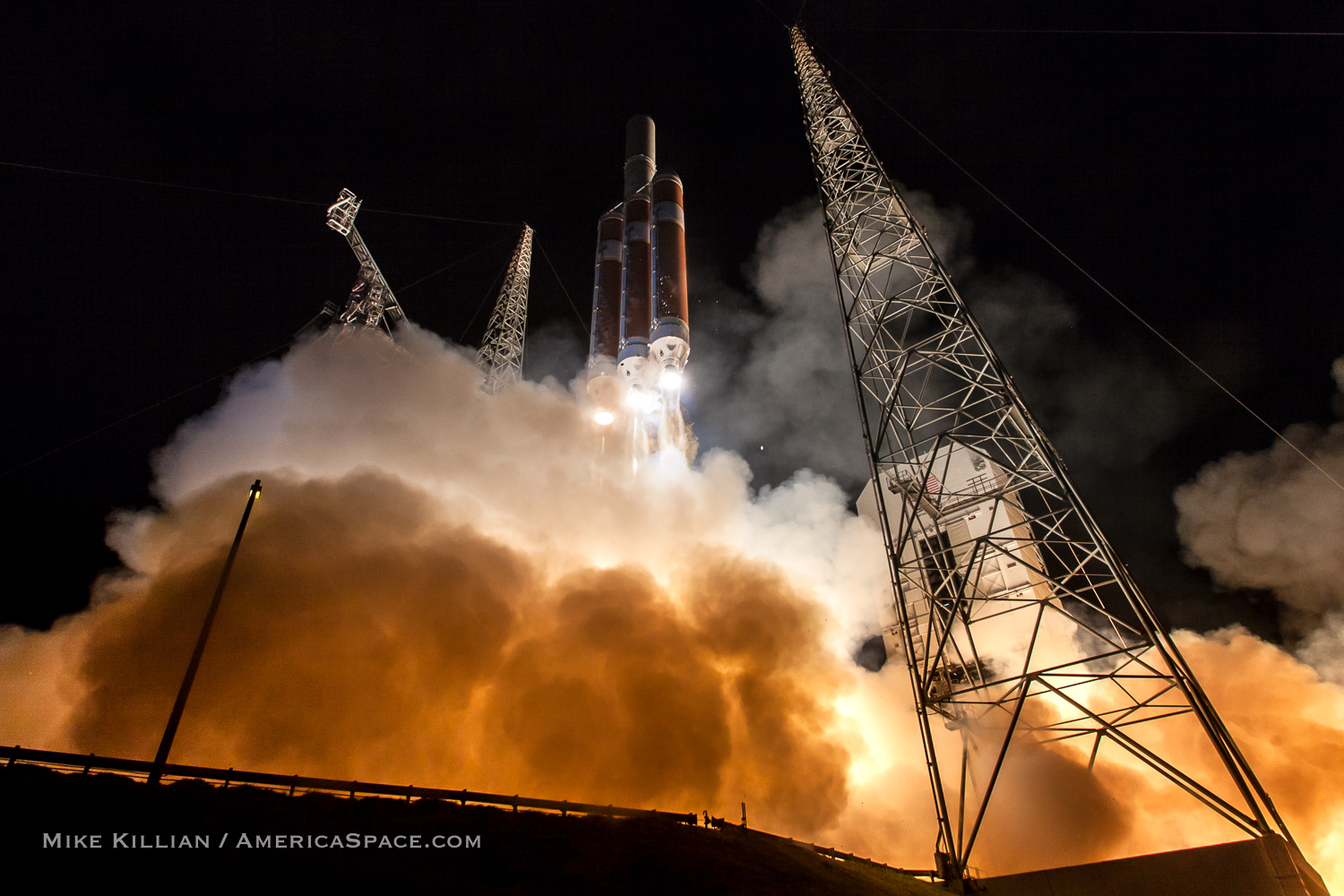
Preparations for NROL-44 got underway last year and the Delta IV Heavy and its Delta Cryogenic Second Stage (DCSS)—but minus the large payload fairing—was rolled from the Horizontal Integration Facility (HIF) to the pad on 15 November atop a 36-wheel, diesel-powered transporter and raised vertical.
After customary systems testing, on 10 January the vehicle was put through a Wet Dress Rehearsal (WDR), which is a key milestone to mitigate any issues ahead of launch day. Typically performed prior to missions with narrow “launch windows”, or at the request of a payload customer, the WDR involved loading all three CBCs with 440,000 pounds (200,000 kg) of liquid oxygen and hydrogen propellants and counting down through the Terminal Count to a simulated cutoff point at T-10 seconds.
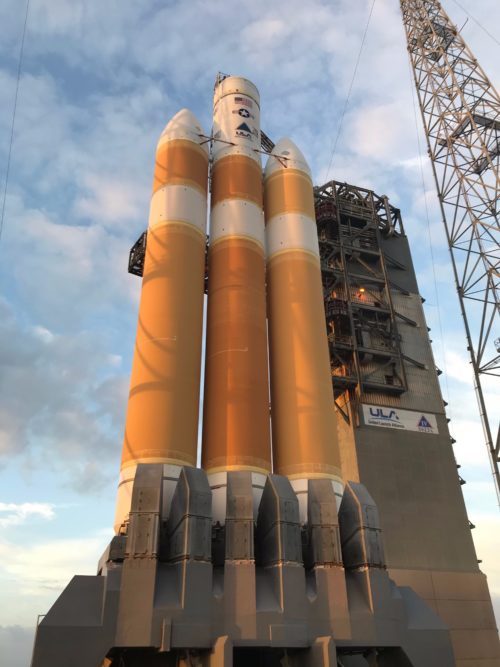
“Wet Dress Rehearsals are completed at customer request,” ULA’s Heather McFarland told AmericaSpace. “NRO missions typically have WDRs.” Certainly, a WDR is expected to occur before another Delta IV Heavy lofts the highly secretive NROL-82 later in 2020.
Unusually, the Delta IV Heavy for NROL-44 had an exceptionally long pad flow ahead of it. Targeted to launch in June 2020, its planned seven months on the pad stretched even further when the mission was delayed—for reasons which have not been divulged—to 26 August. Part of the reason for the lengthy pad flow was to accomplish testing ahead of last December’s inaugural CST-100 Starliner test flight.
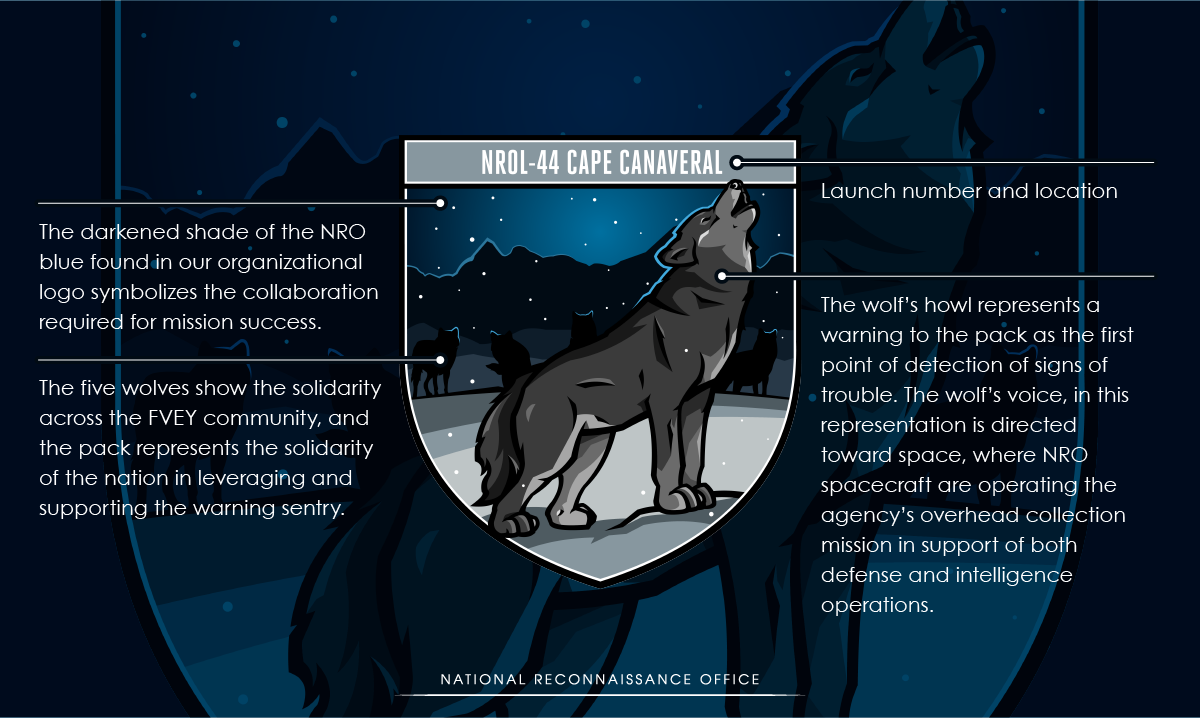
According to Ms. McFarland, the early rollout to the pad was intended “to work within the processing schedules of our manifest”. A one-day postponement to 27 August was effected at the request of the customer, followed by an additional two days of delay in response to a ground pneumatics control system issue which required attention. Efforts to get NROL-44 off the ground at 2:14 a.m. EDT Saturday, 29 August were initially threatened by a temperature issue, which was quickly resolved, and a revised T-0 of 2:38 a.m. EDT was co-ordinated.
The Range Operations Co-ordinator (ROC) reported “Range Green” at T-60 seconds, confirming that all ground-side assets were ready to support the launch and at the Status Check point at T-30 seconds all relevant authorities for both the Delta IV Heavy and NROL-44 verified their status as “Go”. The sparkler-like Radial Outward Firing Igniters (ROFIs)—designed to burn off excess hydrogen lingering under the three RS-68A engine bells—fired as planned at T-14 seconds as the countdown clock ticked towards zero.
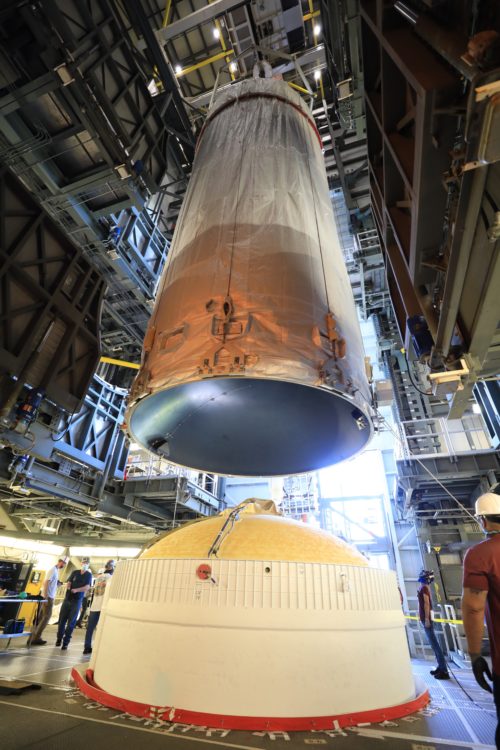
In order to help mitigate the “fireball” effect that the hydrogen burn-off produced on earlier Delta IV Heavy missions, the three CBCs were ignited in a “staggered” fashion, with the starboard booster roaring to life, to be followed by the core, then the port booster. During the last ten seconds of the countdown, the Terminal Count Sequencer Rack (TCSR) took control of the system and worked through the steps to ignite and ramp-up each of the CBCs and release the Delta IV Heavy for flight. Although the starboard booster ignited, the core apparently failed to do so.
“As part of that sequence, the systems runs through checks of all the steps that have to occur before the engines start,” Ms. McFarland told us. “The system aborted at T-3 seconds because the start conditions were not met to proceed with core engine start-up. The starboard engine had started, but the system worked as intended and cut off as expected.”
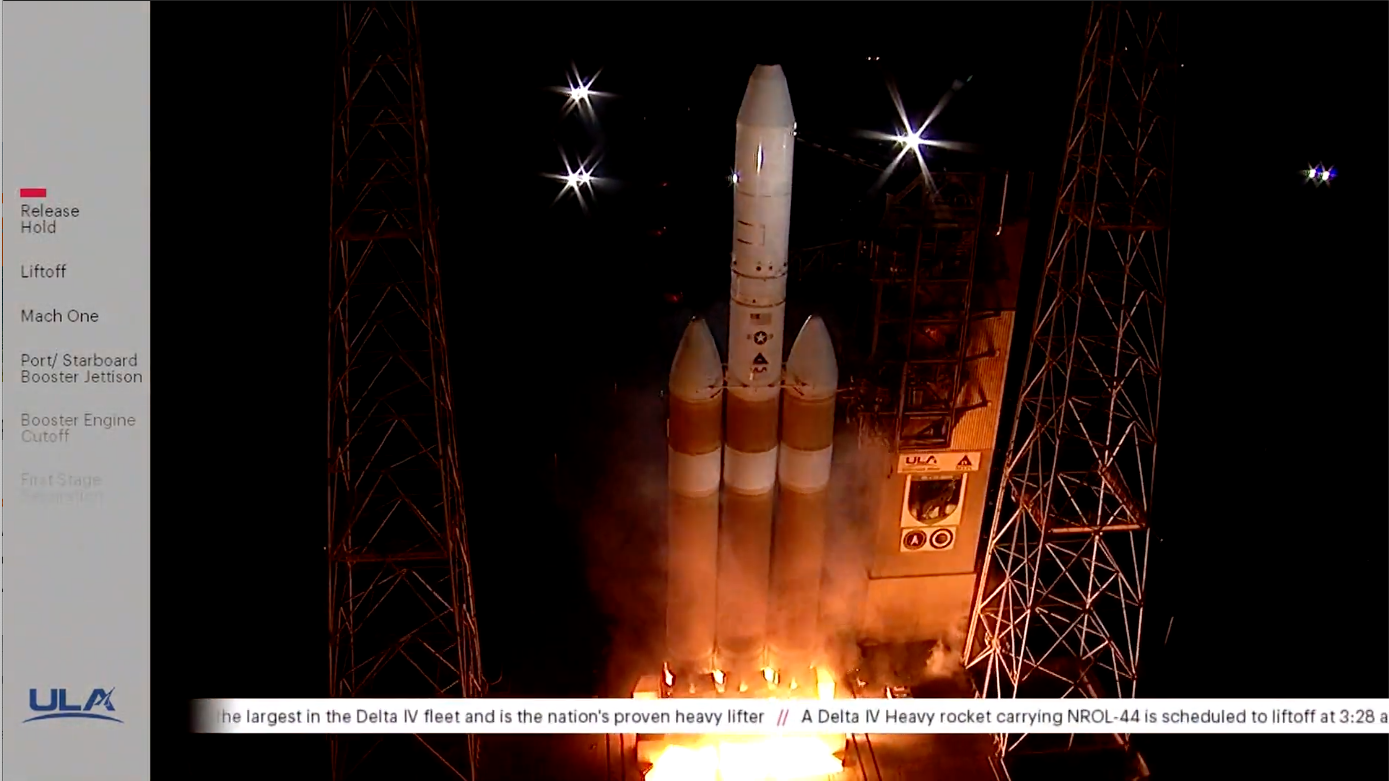
The effect was dramatic, as the hydrogen fireball characteristically engulfed the lower half of the Delta IV Heavy, then the giant rocket fell silent and a tremendous pall of gray-black smoke drifted upwards. So disconcerting have these fireballs been on previous missions that there always seems to be a momentary pause on the part of the launch announcer before calling Liftoff. In this case, the clocks halted so close to T-0 that he seemed convinced that the Delta had indeed left the ground. “…And liftoff…” he intoned, but his words of certainty drained away almost as rapidly as the fiery breath of the rocket itself. “And standby, we’ve obviously had a Hot Fire Abort,” he corrected himself.
In the moments after the abort, steps were put in place to secure the vehicle, ensuring that no fires had broken out on the pad and safing all systems. This was followed by efforts to de-tank the cryogenic propellants. “We will be conducting a thorough engineering investigation to determine root cause and the path forward,” Ms. McFarland told AmericaSpace. “If we experience a pad abort at five seconds or under, there is a seven-day minimum recycle time to replace expended ground system hardware and revalidate flight systems.” She added that “initial indications” pointed towards an issue with the ground system, “but we are working to determine root cause”.
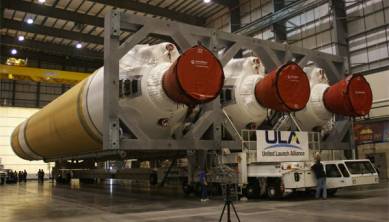
After NROL-44 flies, there are four more Delta IV Heavy missions on the manifest: two from Vandenberg and two final flights from the Cape. The next one is officially targeted for “Fourth Quarter” of 2020 (with October a possibility, judging from ULA’s packed end-of-year manifest) and will lift the NROL-82 payload from the West Coast. Should it fly in October, it will set a new record for the shortest interval between two Delta IV Heavy launches, eclipsing the 60 days which elapsed between the NROL-32 and NROL-49 missions in November 2010 and January 2011. Its three CBCs arrived at Vandenberg aboard ULA’s RocketShip vessel on 5 April 2020 and were transported to the HIF for several months of configuration and erection in SLC-6.
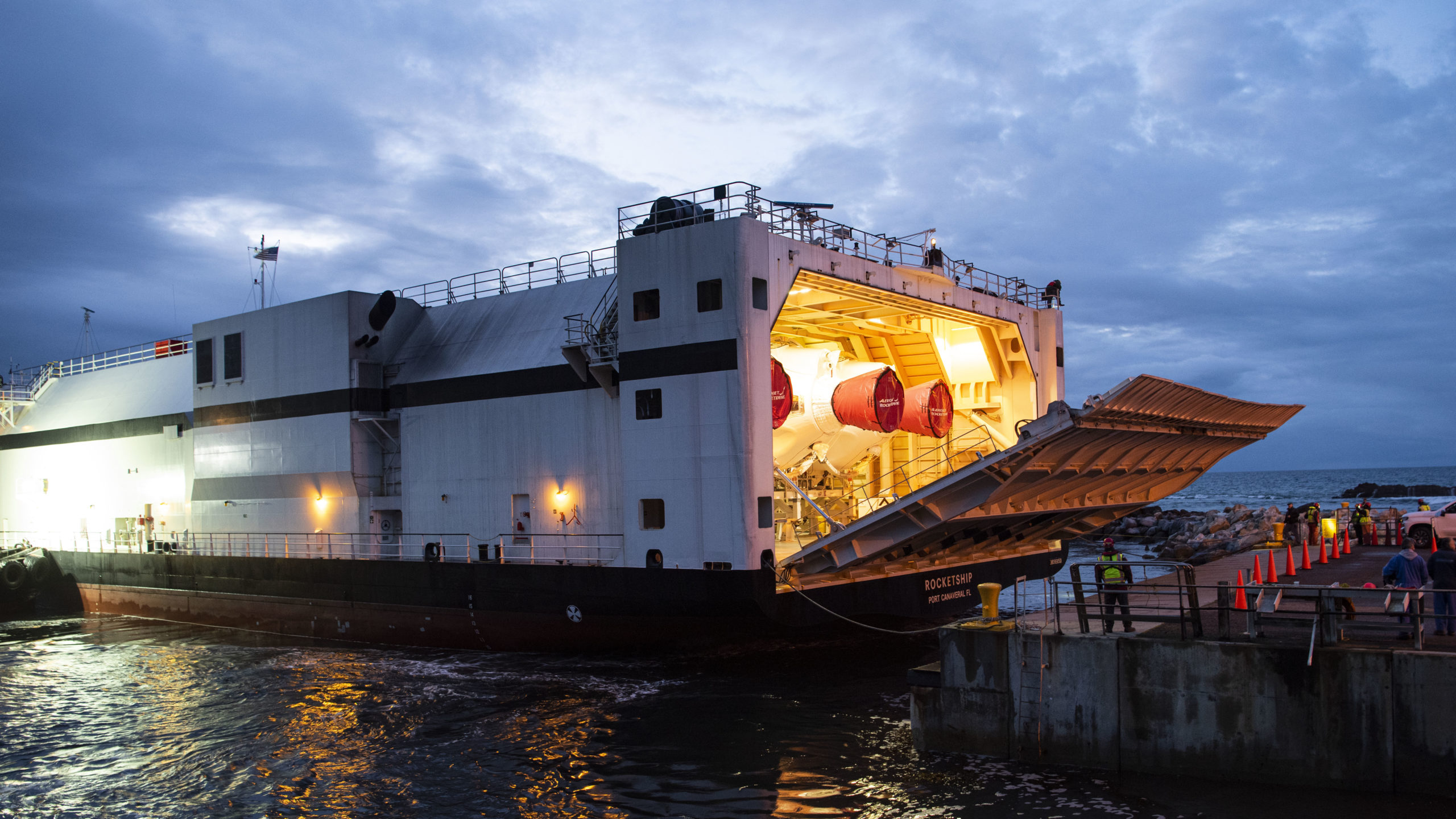
Following the completion of NROL-44 and NROL-82—which may represent the first time that a pair of Delta IV Heavy missions fly in a single calendar year—it is expected that three more launches will occur by the mid-2020s. The first will occur from Vandenberg at some stage in 2022, carrying the NROL-91 payload, whilst the swansong flights will launch from the Cape with NROL-68 and NROL-70, respectively.
Hardware for those missions is being put together across the United States, with the CBCs, payload fairings and DCSSs being fabricated at ULA’s Decatur, Ala., facility and the RS-68A first-stage engines and RL10-B-2 second-stage engines under construction at Aerojet Rocketdyne’s locations in Canoga Park, Calif., and West Palm Beach, Fla., respectively. “The team is currently working through the manufacturing and processing schedule for the remaining Delta IV Heavy vehicles,” Ms. McFarland told us.
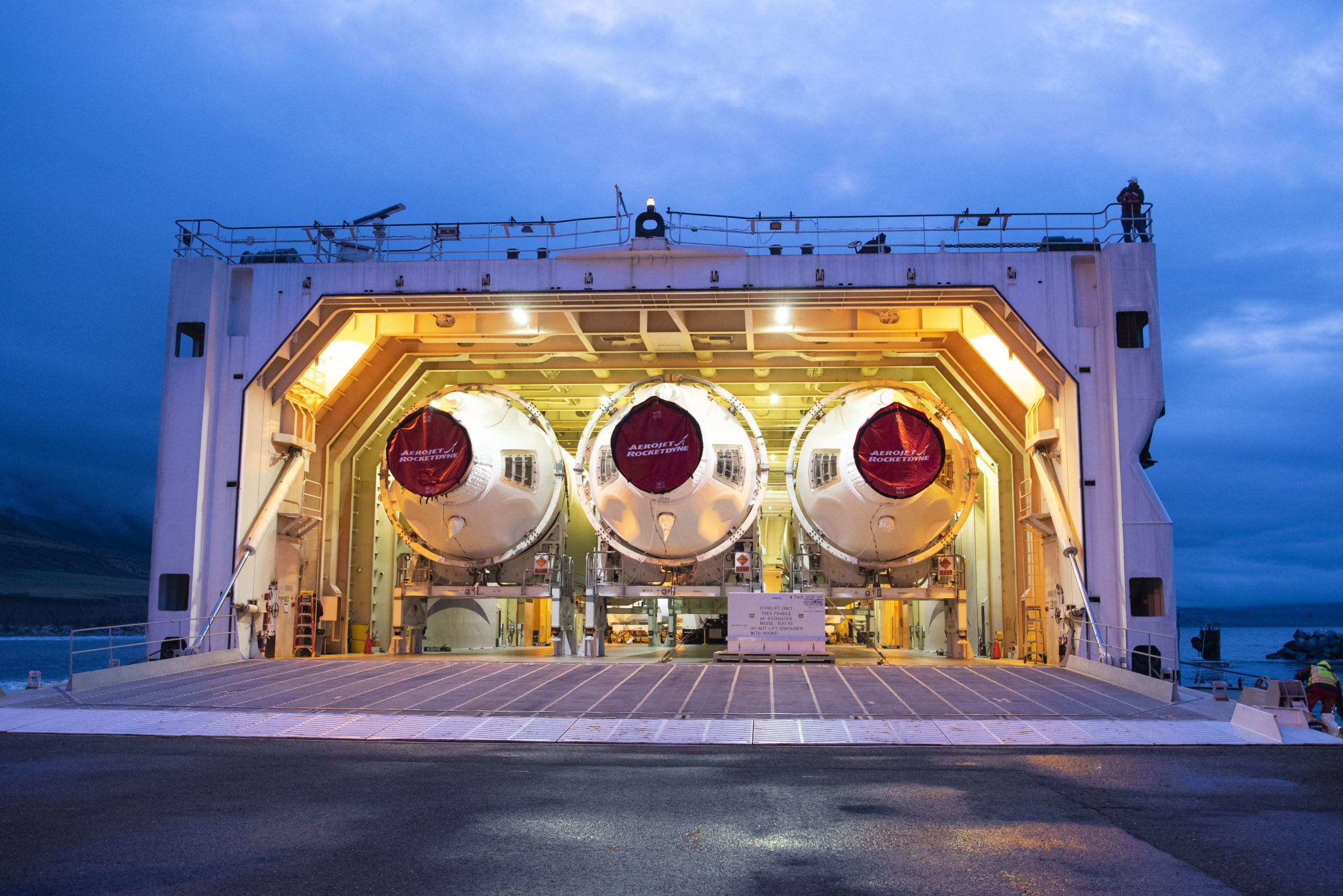
These missions are expected to occur at roughly yearly intervals. Asked about how “fluid” their launch dates are, Ms. McFarland noted only that “We work with our customer to ensure the most optimal launch schedule for the missions”. It is known that the Space and Missile Systems Center (SMC) at Los Angeles Air Force Base in Los Angeles, Calif., in partnership with the NRO, awarded a five-year, $1.18 billion contract modification to ULA in September 2019 to launch all five.
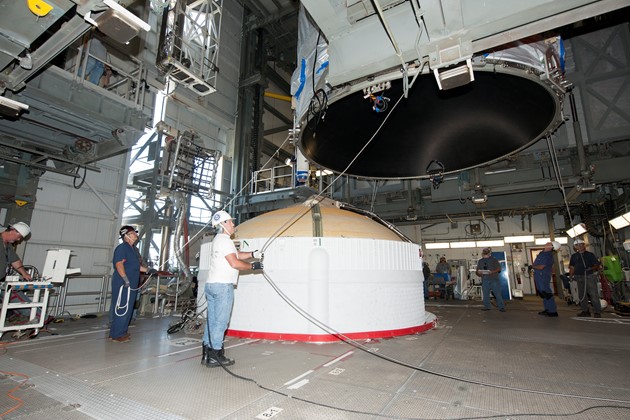
Unsurprisingly, the nature of those five missions remains shrouded in mystery. As previously noted by AmericaSpace, it has been suggested that NROL-44—and perhaps also NROL-91, NROL-68 and NROL-70—may be Advanced Orion/Mentor signals-intelligence satellites, bound for geostationary orbital locations at 22,600 miles (35,900 km) above the planet. It has been postulated that these satellites may weigh as much as 11,500 pounds (5,200 kg).
“The Northrop Grumman satellite has a Harris mesh antenna spanning about 330 feet (100 meters),” AmericaSpace explained in our June 2016 report on NROL-37, thought to be the most recent instance of an Advanced Orion/Mentor launch. “The overall spacecraft was substantially upgraded starting in 2009 with the NROL-26 flight carrying the first Advanced Orion/Mentor.” The supreme lifting capabilities of the Delta IV Heavy is also believed to afford these huge satellites additional “maneuvering, life-extending and eavesdropping intelligence capabilities”.
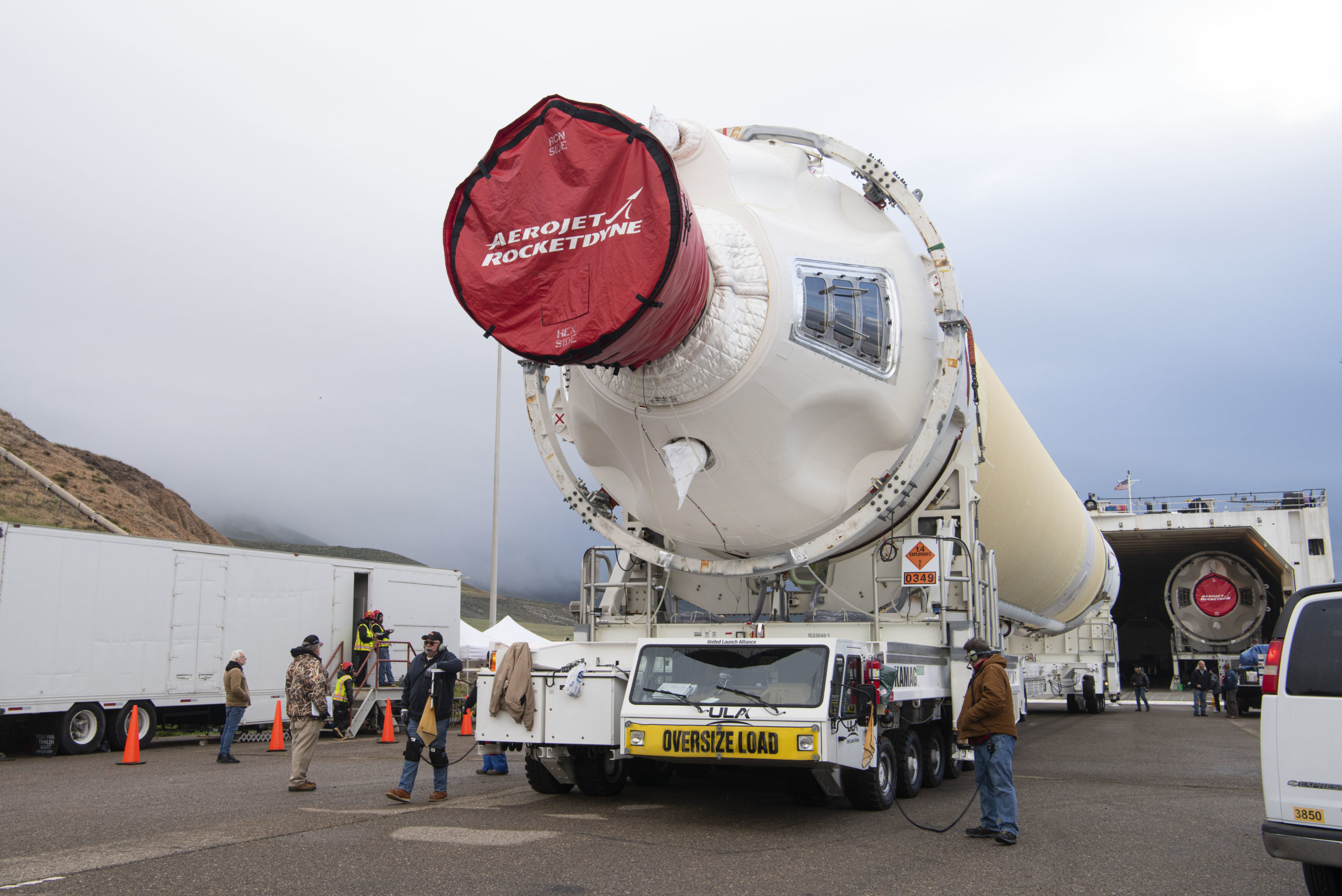
As for this fall’s NROL-82, little is known, although it has been suggested that it might be a KH-11 Kennen reconnaissance satellite, potentially weighing as much as 41,900 pounds (19,000 kg). This class of satellites—of which the Delta IV Heavy’s most recent payload, NROL-71, back in January 2019, is also believed to have been one—are thought to operate in slightly elliptical orbits at an altitude of 160 x 620 miles (260 km x 1,000 km). They are thought to possess eight-foot-wide (2.4-meter) primary mirrors which afford them a ground-imaging capability of less than six inches (15 cm).




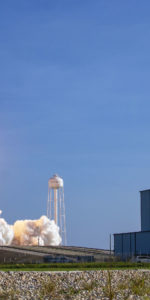
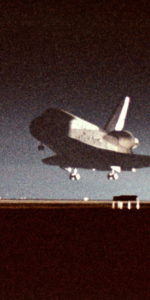
Great article, almost feel that I was present on site. ULA is doing a great job with a very complex system; wish them success.
Must admire the safety checks in place.
Mission success can only happen if everything works.
Again thanks for the great details.
In the metric system thrust is measured in Newtons. A kilogram is a unit of mass. You are misled by the fact that in the traditional system of units the unit pound is a unit of weight, that is a unit of force, whereas the kilogram is a unit of mass. The unit pound includes the acceleration of gravity at a specific location in the universe. Similarly when thrust in pounds is divided by the fuel rate in pounds per second the resulting performance measurement has units seconds, which makes no sense until you again realize that the thrust includes the mean acceleration of gravity at the Earth’s surface. In the metric system you divide Newtons of thrust by kilograms of fuel per second and you get the effective velocity of the exhaust in metres per second. ULA is the only launch company which continues to describe its products using the traditional units. All other suppliers, even including American companies such as SpaceX, use the metric system.
=you described this with precision!
Thank you